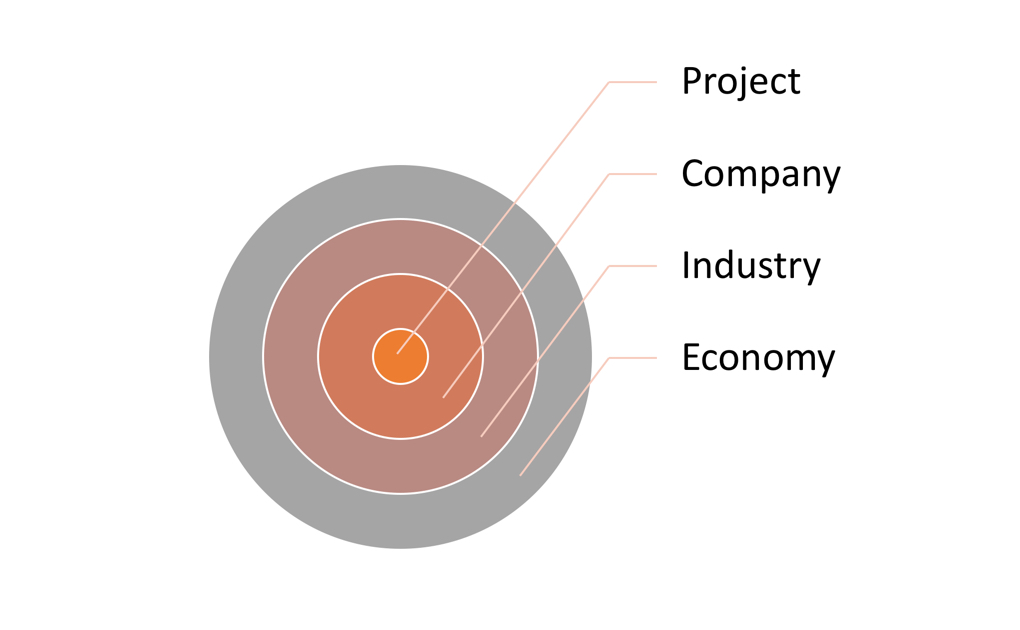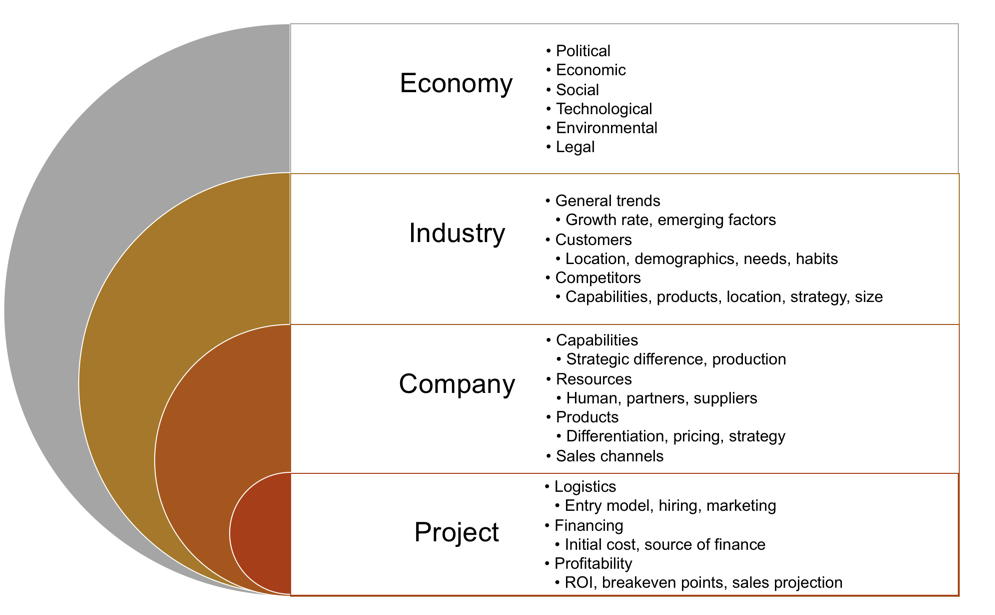As I have been asked by quite a lot of people to share some frameworks, I will use the next 3 posts to walk you through the most frequently used frameworks in the case interview.
While you are reading those frameworks and related examples, keep in mind that no framework is the skeleton key to all case interviews. What you need to do is absorb the methods or concepts applied in each framework and then make your own version.
Having said that, we will now begin by exploring the framework which is most widely applicable in case interviews: the Market Study Framework.
The Market Study Framework, some others may call it the “market entry” or “business situation” framework, is a means of understanding how attractive a new or existing market is. You can use this framework when clients are considering entering a new market (new industry or new country), launching a new product, or targeting a new customer segment. A typical case prompt is “Your client is thinking of introducing a new type of camera to Japan and wondering if this a good idea”.
The Market Study Framework has four parts starting with macro factors and then moving on micro factors. The four parts are Economy, Industry, Company, and Project.
Chart 1 – Market Study Framework
Now, let’s have a look at each of those four parts one by one.
Starting with the macro part. The Economy focuses your attention on broad macro factors including political, economic, social, technological, environmental, and legal issues. Actually, if you have studied any type of marketing course, you will know the P.E.S.T.E.L framework, which is just the acronym of those factors which need to be considered in the Economy part. Just search PESTEL online and you will find many details.
Moving next to the Industry, there are three main things to consider. Firstly, it includes factors like market trends, growth rate, and new emerging influences such as technology and consumer behaviour. Secondly, it includes customer related factors such as who are the customers, what are their characteristics, what are their needs, where are they geographically, and what are their pain points. Thirdly, don’t foget the competitors: who are they, what are their competitive advantages, what are the products they produce, and where are they located. All three factors relate to the overall industry situation and competition dynamics.
The next part is the Company. It involves looking inside the client’s company. For example, what are the capabilities of the company, what is its key product or service, how strong are the sales channels, who are the employees. It is important to identify key levers within the company that can support new market entry or new product launch.
The most micro part of this framework is the Project. It mainly focuses on project specific factors such as financing, logistics, and profits.
You can see a picture that better illustrates the framework below.
Having this framework in mind, you will be able to setup your own framework by tailoring different parts of it. Remember the suggestion in the beginning, do not try to fit a framework to all cases. When you are solving a case, you do not need to use all four parts of this framework, rather choose the most relevant and important parts for your situation.
Let me give you four examples.
Scenario I: Case prompt “Company A who manufactures stylish chairs is thinking of entering the South African market. Is it a good idea for them to do that?” With this situation, it is probably wise to use the whole framework. However, you may not start with the Economy but rather examine the Industry first, since you may believe that understanding customers is the very first step.
Scenario II: “How will you assess the future of the web search engine business in China?” This case may require you to mainly focus on the Economy and Industry parts rather than the other two, since it is testing your market sizing and overall business acumen.
Scenario III: “Company B has recently developed a new drug which could treat stomach cancer, how would you suggest the company launch this product?”. With this case, you should use the whole framework, but focus more on the Industry and Project parts.
Scenario IV: “CEO of Company C wants to divest one subsidiary, how would advise the CEO?” Such a case will mainly require you to focus on the Industry, Company, and Project parts.
The above four scenarios show you the importance of using this framework with flexibility. As a matter of fact, you can even modify the framework by extracting sub-elements out. For example, you can extract elements like Company, Customer, Competitor, and Product to form a new framework. (OK, you may realize, this will be exactly the same as Victor Cheng’s framework). What I’m hinting at here is that the frameworks are linked. They are a different form of one another in essence. So, the point I can’t emphasis enough is that you need to absorb this framework and then use it to create your own version which fits each case you encounter.
Free Download: This guidebook distils all of Mike’s insights on how to achieve success in your journey towards a career in management consulting: download now!
Mike Ni believes that technology is the engine of the future, while business capability is the wheel!
Image: Pexels


